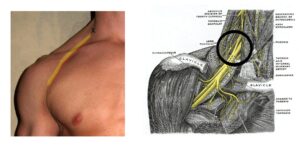As I have mentioned recently, I am currently reading the Pellucidar novels of Edgar Rice Burroughs. Often the protagonists prevail against their caveman enemies by their “Outer Crust” knowledge of Boxing or Jiu-jitsu. Consequently this has got me interested in again reading some of the older Jiu-jitsu manuals that I have available.
One of the oldest I have come across is from 1904. The two Japanese fighters demonstrating the techniques do not look like they are much taller than five foot. What would they make of modern Japanese, I wonder?
The book has some interesting techniques, most of which will be familiar to modern students of martial arts. A couple of techniques can be criticised as being overly elaborate, although that can be said of many manuals. Just because a book shows a thing as possible does not mean it is the best solution. It may be there for illustrative purposes of basic principles, for example. This particular book can be praised for often avoiding complicated throwing techniques when simple strikes can produce the desired result. I do not recall any kicks being used in this book, the strikes used being the knife-hand, the elbow and a two-finger jab directed against the solar plexus.
A section of the book that struck me in particular was on the various uses of “the Shoulder Pinch”.
We get told that pressing into this point with the thumb or fingertips is a good way to make someone release a hold, move them aside when they are obstructing you and various other applications to induce compliance.
The one photograph that purports to show the Shoulder P does not show its location with sufficient clarity. The recipient’s head prevents me seeing where the thumb is being applied. The text tells us:
The thumb is pressed into the front side of the top of the shoulder, while the grip is kept by grasping with the fingers at the back of the shoulder. A very little practice upon his own shoulder will show a jiu-jitsian where the spot is that is hyper-sensitive to the pinch with the thumb. Bear in mind that the ball of the thumb should dig in at the point where the head of the upper arm joins the scapula.”
I would have assumed that the “Shoulder Pinch” was against the brachial plexus but the last sentence suggests a more peripheral location. The brachial plexus is quite an effective location to apply a thumb or fingertip to. The nerves from the plexus continue into the arm and can also be pressed upon closer to the shoulder joint if you use deep pressure. It is possible the author considered both locations to be “the shoulder pinch”.

The brachial plexus is pretty easy to locate. Just search around where the neck forms a corner where it joins the trapezius muscle. The anatomical diagrams should hopefully make this clear.
The brachial plexus is also a good target for strikes such as the knife-hand, hammer-fist and forearm. You have probably heard of the “brachial stun” technique that has become well-known in recent years. Often the technique shown in videos is a strike to the side of the neck. A strike to the actual brachial plexus will have similar effects and this point is often easier to hit during combat than the side of the neck.

Like any strike to a major nerve centre, this can be potentially very damaging so do not attempt this except in a real self defence situation.